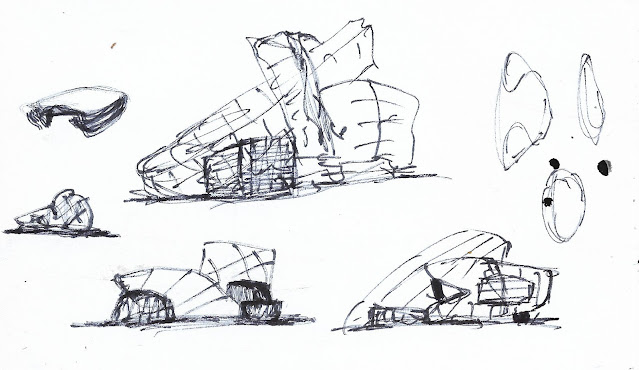Auditoriums stand as architectural marvels, embodying the essence of performance, artistry, and communal experience. Designing an auditorium in architecture is a meticulous process that requires careful consideration of functionality, aesthetics, and acoustics. In this guide, we delve into the essential elements and key considerations for designing auditoriums that inspire creativity, engage audiences, and elevate the performing arts.
Understanding the Purpose:
Before embarking on the design process, it's crucial to understand the purpose and vision of the auditorium. Is it intended for theatrical performances, musical concerts, lectures, or multimedia presentations? Clarifying the primary function of the auditorium will inform key design decisions and ensure that the space meets the needs of its users.
Spatial Planning and Layout:
Effective spatial planning is fundamental to the design of a functional and user-friendly auditorium. Consideration should be given to the layout of different areas within the auditorium, including the stage, seating arrangement, backstage facilities, and ancillary spaces such as dressing rooms, green rooms, and control booths. Flexibility is key, allowing for adaptable spaces that can accommodate diverse events and performances.
Acoustic Design:
Acoustic design is a critical aspect of auditorium design, ensuring optimal sound quality and clarity for performers and audiences alike. Architectural features such as curved walls, diffusers, and acoustic panels are used to control reverberation, minimize sound distortion, and enhance the acoustic properties of the space. Additionally, integrating sound-absorbing materials, such as fabric wall coverings and carpeting, helps to reduce ambient noise and improve speech intelligibility.
Seating Design and Sightlines:
Seating design is essential to creating a comfortable and immersive experience for audiences. The arrangement of seats should provide clear sightlines to the stage from every vantage point, ensuring that all audience members have an unobstructed view of the performance. The slope and rake of the seating should be carefully calibrated to maximize visibility and optimize acoustics, creating an intimate and engaging atmosphere for spectators.
Stage Design and Performance Space:
The design of the stage is a focal point of the auditorium, serving as the central platform for performances and presentations. The size and configuration of the stage should be tailored to accommodate different types of performances, from theatrical productions to musical ensembles and dance recitals. Backstage facilities, such as dressing rooms, storage areas, and technical spaces, are essential for supporting the needs of performers and crew members.
Lighting and Aesthetics:
Lighting design plays a crucial role in enhancing the ambiance and atmosphere of the auditorium. Architectural lighting fixtures, such as spotlights, floodlights, and LED strips, are strategically positioned to highlight performers, accentuate architectural features, and create dynamic lighting effects that enhance the visual impact of the performance. Additionally, incorporating decorative elements such as chandeliers, sconces, and architectural detailing adds a touch of elegance and sophistication to the auditorium space.
Accessibility and Inclusivity:
Designing an auditorium with accessibility and inclusivity in mind ensures that the space is welcoming and accommodating to all patrons, regardless of age, ability, or background. Incorporating features such as wheelchair-accessible seating, assistive listening devices, and captioning services ensures that the auditorium is accessible to individuals with disabilities. Additionally, providing ample space for maneuverability, accessible restrooms, and designated parking ensures that the auditorium is inclusive and welcoming to all members of the community.
Technology Integration:
Integrating technology into the design of the auditorium enhances the versatility and functionality of the space. State-of-the-art audiovisual systems, projection screens, and multimedia displays enable a wide range of presentations and performances, from live theater productions to film screenings and multimedia installations. Additionally, integrating connectivity features such as Wi-Fi, streaming capabilities, and interactive touchscreens enhances the audience experience and facilitates engagement with digital content.
Environmental Sustainability:
Designing an environmentally sustainable auditorium promotes responsible stewardship of resources and aligns with principles of environmental conservation and social responsibility. Incorporating energy-efficient lighting, HVAC systems, and building materials reduces energy consumption and greenhouse gas emissions. Additionally, integrating green building practices, such as rainwater harvesting, daylight harvesting, and renewable energy systems, enhances the ecological resilience of the auditorium and minimizes its environmental footprint.
Conclusion:
Designing an auditorium in architecture is a multifaceted process that requires careful consideration of functionality, aesthetics, acoustics, accessibility, technology, and sustainability. By understanding the purpose and vision of the auditorium, prioritizing spatial planning and acoustic design, optimizing seating arrangements and sightlines, integrating lighting and aesthetics, ensuring accessibility and inclusivity, embracing technology and sustainability, architects can create auditoriums that inspire creativity, engage audiences, and elevate the performing arts for generations to come.






_1.jpg)
_2.jpg)
_1.jpg)
_2.jpg)
_1.jpg)
_2.jpg)
_1.jpg)
_1.jpg)
_2.jpg)
_1.jpg)
_2.jpg)

















No comments:
Post a Comment